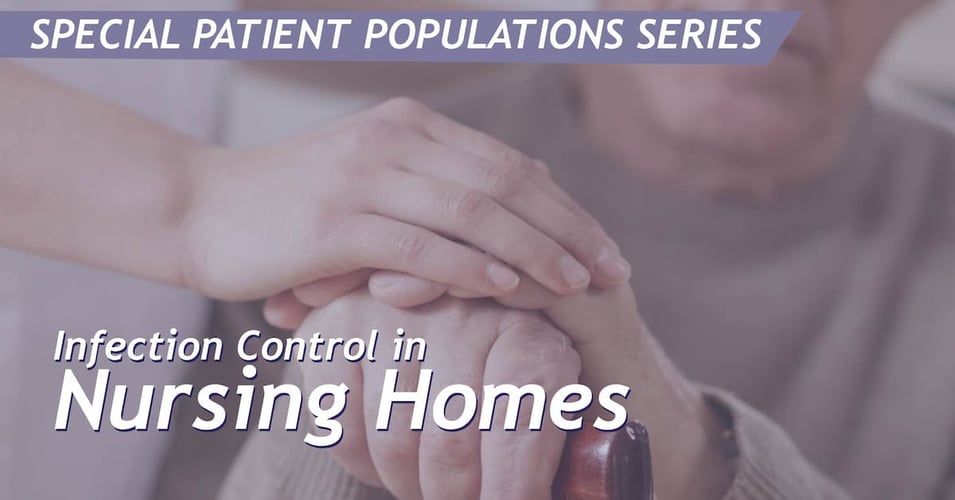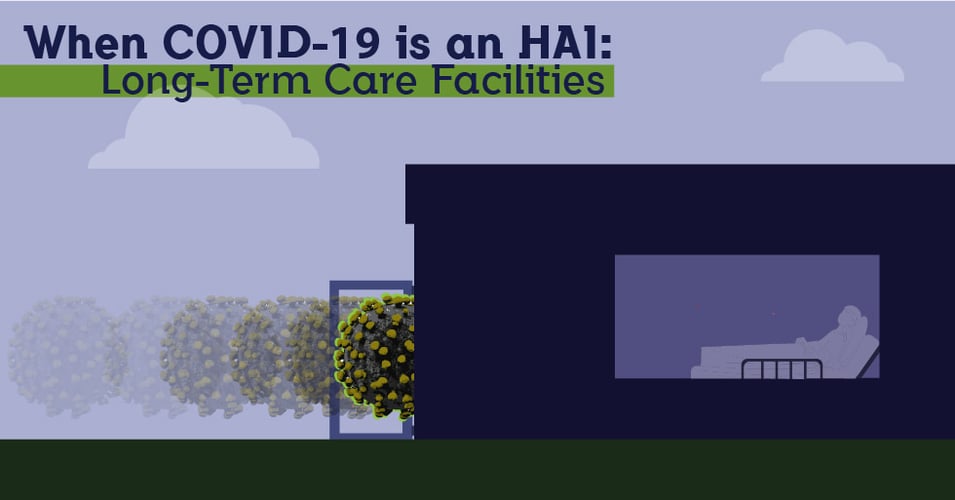Nursing Homes and Infection Control: The Most Vulnerable Patients

As we age, our bodies go through changes that can make us more susceptible to disease, injury, and infection. Individuals who experience the greatest number of health issues as they age may find that a nursing home or assisted living facility provides the best medical support. Unfortunately, that then places those individuals in a subset of our aging population who are at greatest risk for infection. Today's post will explore how age and infection risk are related.
Age Changes Our Bodies
As we age, our bodies change, and some of these changes make us more susceptible to infection. Our muscles become weaker, limiting mobility. Our skin becomes thinner and more vulnerable to injury. Our bones become more brittle, making falls increasingly dangerous. And just as age affects muscle tone, skin strength, and bone density, it also affects our immune system. Our own internal defenses, such as white blood cells, antibodies, fever response, and other physiological reactions to illness become weaker.
The infections that are most common in nursing facilities (which we will explore in our next post) are directly related to these physical changes in older bodies. Urinary tract infections are more likely with compromised kidney function, while skin infections are more likely when open wounds are present. These issues of general aging, when combined with increased likelihood of chronic illness, and infection becomes even more likely.
Age and Chronic Disease
While our life expectancy has improved drastically over the past 100 years, these added years mean that many of us will grow old with a chronic disease or other health issues. These conditions can make an older patient far more vulnerable to infection. The most common chronic diseases or conditions associated with advanced age that increase our infection risk are diabetes, kidney/bladder issues, dementia, and lung disease. Poor nutrition, also associated with older patients, can also make an older individual more susceptible to infection.
Age and Symptoms, Age and Responses
Along with the general weakening of the body as we age, combined with the possibility of chronic disease or health conditions, our symptoms and responses to therapy also change over time. Symptoms of infection in healthy patients include fever, chills, and inflammation. Many of these symptoms are related to our immune system response, so if that is weakened, the symptoms may not be present and therefore we aren't alerted to the underlying infection. Often, the key symptom of infection in an older patient is mental confusion, a condition that can often be mistaken for dementia or lumped in with "typical" elderly behavior and therefore cause an infection to be overlooked.
Once a diagnosis is made and a treatment initiated, an older patient may respond differently than expected. Because of compromised organs that process medicine (liver and kidneys), some patients may respond slower, while others may even have a toxic response to a medicine. Any invasive diagnostic procedures may result in complications as well, and longer healing time.
Perhaps most heartbreaking, an older patient is far less likely to report symptoms such as confusion, pain, or discomfort. In one study, researchers found that older patients do not report symptoms out of fear of losing independence, becoming a burden to others, or not being believed. The study goes on to provide helpful approaches to enabling an older patient to safely report symptoms in a way that is both medically helpful and psychologically comfortable. This particular vulnerability requires both a gentle response as well as consistent supervision.
Within this uniquely vulnerable subset of patients, a need for innovative technologies and protocols will be necessary to bring down alarmingly high (and rising) infection rates in nursing homes. Next week, we'll see how the unique challenges facing older patients make nursing homes particularly vulnerable to infection outbreaks. Thank you for continuing to engage with this important topic!
Editor's Note: This post was originally published in May 2017 and has been updated for freshness, accuracy and comprehensiveness.
![EOScu Logo - Dark - Outlined [07182023]-01](https://blog.eoscu.com/hubfs/Eoscu_June2024/Images/EOScu%20Logo%20-%20Dark%20-%20Outlined%20%5B07182023%5D-01.svg)

![[infographic] Elderly Patients and HAIs Download and share!](https://no-cache.hubspot.com/cta/default/216314/interactive-178936108064.png)



